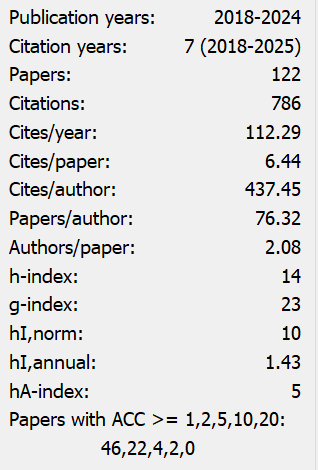Valuation Dilemmas and Optimization Pathways for Capitalizing Data Assets in Manufacturing: Evidence from Zhongan Technology Group in Guiyang
Abstract
Against the deepening digital economy, data assets have become a new engine for value creation in manufacturing. But structural barriers—including strong contextual stickiness, sensitivity to industry fluctuations, and fragmented ownership- mean manufacturing data assets still struggle in valuation. This paper focuses on Guizhou Zhongan Technology Group’s pioneering practice, systematically examining the data asset valuation challenges during financial recognition. It clarifies two key aspects: the formation mechanism behind the triple dilemma of scene dependence, value fluctuation, and ownership compliance. And a three-in-one optimization framework of "scenario-based partition pricing, fluctuation risk mitigation, and ownership chain verification. The study provides both a replicable operational model for manufacturing data assets to be recorded in financial statements and a theoretically grounded, practically relevant decision-making reference for the industry’s digital transformation[3].
References
[2] Lu, S. (2025). Discussion on financial recognition of data assets in manufacturing enterprises. Cooperative Economy & Science, (12), 149–151. https://doi.org/10.13665/j.cnki.hzjjykj.2025.12.022
[3] Lin, K. L., & Wang, Z. Z. (2022). Research on digital economy empowering the transformation and upgrading of manufacturing industry. Management and Technology of Small and Medium Enterprises, (6), 55–57.
[4] Ren, S. R., & Zhang, L. (2025). Classification and valuation methods of data assets in state-owned enterprises. State-owned Assets Management, (6), 59–68.
[5] Wang, X. L. (2024). Rights confirmation, valuation, and financial recognition: Research on data assetization and its practical effects in Chinese enterprises. Journal of Shenzhen University (Humanities & Social Sciences), 41(6), 82–92.
[6] Liu, S. Q. (2024). Compliance path analysis for financial recognition of enterprise data assets in the digital economy era. Fortune Today, (31), 74–76.
[7] Shi, Z. H. (2025). From "data rights confirmation" to "data monetization": Dilemmas and breakthroughs of China’s data intellectual property system in financial scenarios. Enterprise Science and Technology & Development, (4), 1–9. https://doi.org/10.20137/j.cnki.45-1359/t.20250521.001
[8] Pan, S. Y. (2024). Intelligent construction of manufacturing production lines based on digital twin technology. China Internet Weekly, (21), 37–39.
[9] Huang, M. X., & Liang, M. T. (2025). Exploration and practice of data governance in manufacturing enterprises. China Informatization, (5), 43–44.
[10] Tian, Y. (2024). Challenges in financial recognition of data assets for manufacturing enterprises. Metallurgical Financial Accounting, 43(11), 8–9, 12.
[11] Zheng, S. (2025). Research on recognition and measurement of enterprise data assets in the digital intelligence era. Industrial Innovation Research, (13), 135–137.
[12] Zhou, Y. R., Zhang, X. Y., Liao, S. Y., & Tan, L. (2025). Financial recognition of data resources in listed enterprises of data exchanges: A case study of COSCO Shipping Technology. Finance and Accounting Monthly, 46(14), 104–109. https://doi.org/10.19641/j.cnki.42-1290/f.2025.14.016

This work is licensed under a Creative Commons Attribution 4.0 International License.
Copyright for this article is retained by the author(s), with first publication rights granted to the journal.
This is an open-access article distributed under the terms and conditions of the Creative Commons Attribution license (http://creativecommons.org/licenses/by/4.0/).


























